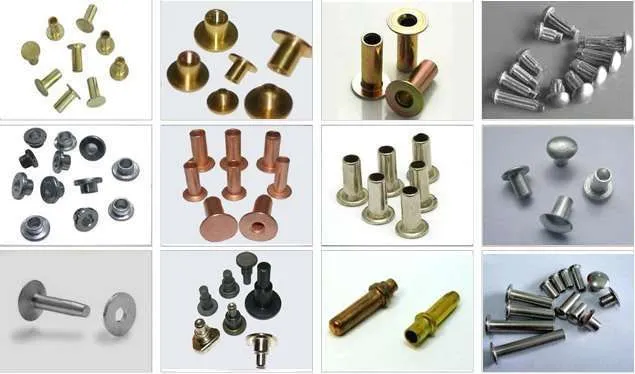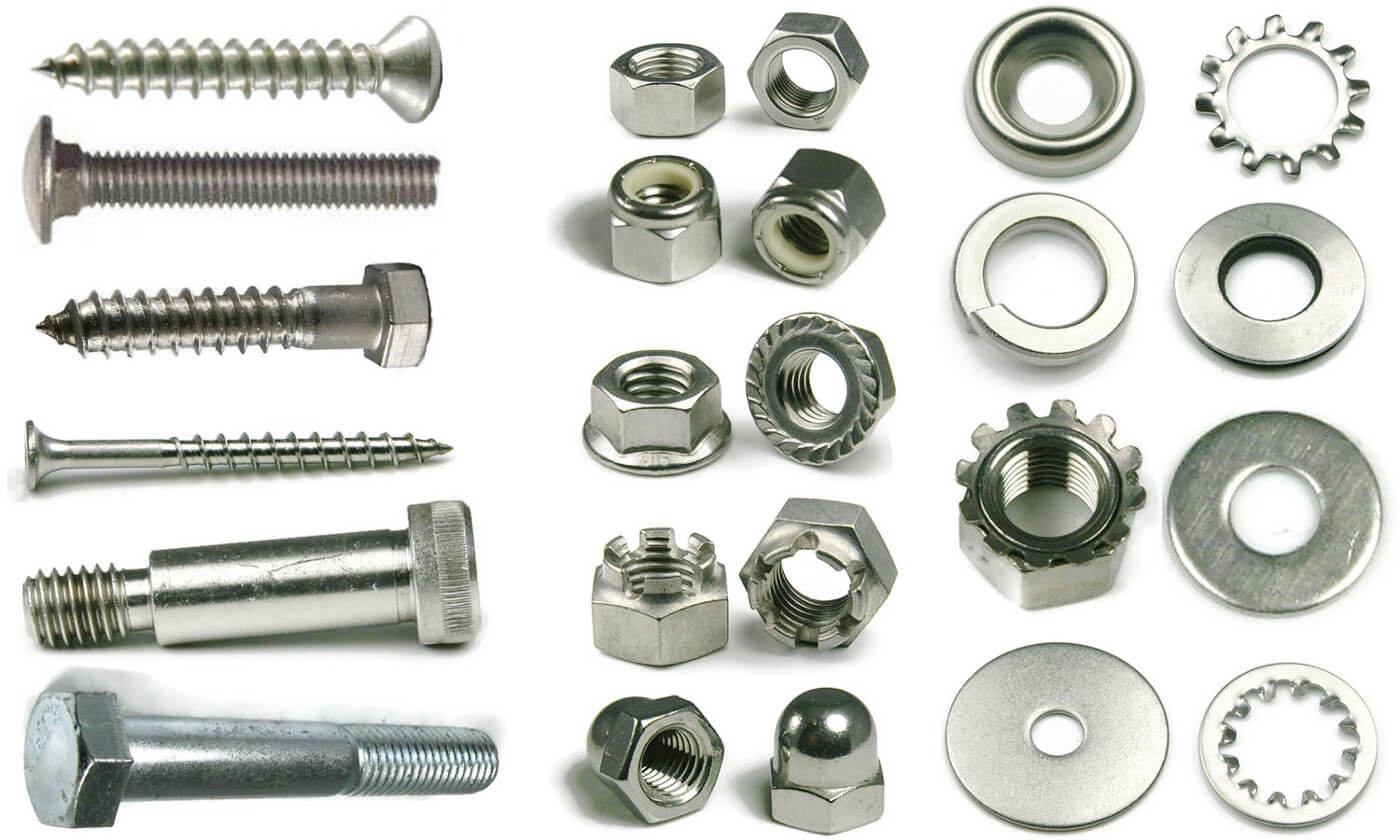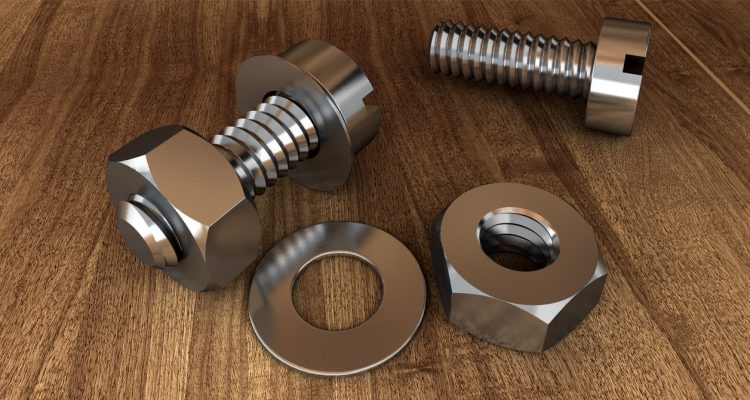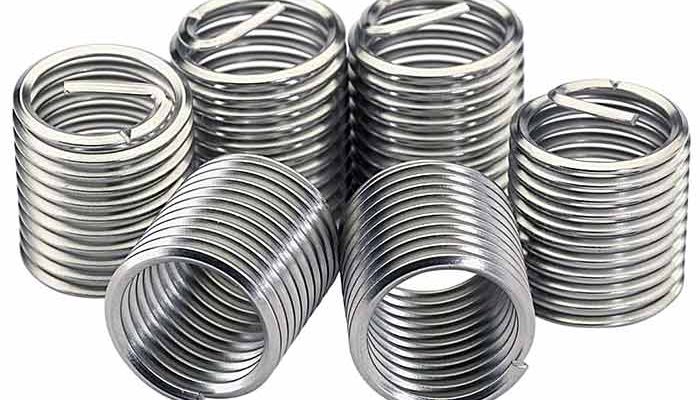
6 Types Of Fasteners And When To Use Each
Fasteners ensure durable connections: bolts and nuts for disassembly, screws for precise installations, rivets for permanent joints, anchors for masonry, and washers to protect surfaces and maintain alignment
Bolts and Nuts
However, bolts and nuts are components incorporated into a wide array of objects. Generally, these two items are considered the most commonly used fasteners for creating non-permanent joints, as the usage of a bolt that is mated with a nut allows for a more effective connection. Importantly, this merge is effective in cases of requirements for maintenance and adjustment of the joined materials without the necessity of releasing and reapplying the joint; as a result, if properly tightened, nuts and bolts are considered effective locking devices for this application.
Ideal Applications
In such cases, the bolts and nuts being one of the preferred choices are usually ordered as a part of Grade 8 steel bolts assembled with a nut. Such solutions ensure the longevity and durability of the constructed object, as the combination is capable of withstanding up to 150,000 psi of force, proving essential for automotive applications in the engine assembly, heavy machinery, and the erection of bridges or buildings. In the latter cases, the bolts and nuts could be replaced with alloy steel, which ensures the enhanced strength of the connection, in some cases allowing for the bolt-free installation of construction components.
Selection Criteria
However, these are not the only kinds of materials and structural requirements to be considered: the materials that need to be joined, the working environment, and the applied forces all play a role in the selection of the appropriate bolt and nut assembly. The use of stainless steel in highly corrosive environments is recommended, while applications requiring increased strength can make use of alloy steel.
Advantages and Performance Data
While the usage of bolts and nuts cannot be easily quantified, their usage is accompanied by certain advantages. Most notably, these components are easy to install and ensure high strength and resistance to shear loads as a requirement for mechanical load applications. An example of this can be exhibited by the usage of a tension control bolt in the construction of steel structures, as the bolt ensures the rare possibility of slippage while maintaining the applied tension as well as enhancing the predefined load distribution, leading to increased structural performance and permanence.
Real-World Application
Thus, in the construction of the Golden Gate Bridge, it was imperative to use bolts and nuts when assembling the suspension structure. This ensured that the bolts were properly tightened to be able to handle the compression and tension applied to the bridge daily, thus adjusting the length and tension of the specific bolts to ensure the longevity of the joined elements in such a large-scale project.

Different types of fasteners used in manufacturing Screws, bolts
Screw
Screws are fasteners converting rotational force into linear force and motion, threading into materials to join two or more items together. Unlike bolts, screws generally do not require a nut because they are designed to cut into the material they are being driven into, providing their own internal thread. Additionally, screws are highly versatile and have a number of specific applications where they outperform other fasteners.
Ideal applications
Owing to their precision and strength, screws find a wide range of uses in woodworking, metalworking, and electronics. In carpentry, the ability of screws to be removed and replaced without damaging wood is particularly valuable for constructing and repairing furniture. In metal, special types of screws called self-tapping screws are used to join sheet metal in automotive bodies and home appliances.
Selection criteria
The selection of the right screw includes considering the material the screw will be driven into, the material the fastened items are made from, the thickness of the material, and the environmental conditions. For example, an outdoor item of furniture is best assembled with a stainless steel screw, as they do not rust. Additionally, the length of the screw and its gauge are critical – it must be long enough to anchor the joined items firmly together but not so long it pierces out the opposite side.
Advantages and performance data
Screws generally retain the joined items tighter than nails would due to their threading and clamping design. “… in wood joints, data from the construction industry shows that screws can handle both lateral and tensile pressure better than nails…”. Thus, fastening items with screws rather than nails can reduce the risk of the structure failing.
Real-World Application
It is no coincidence that IKEA furniture can be assembled and disassembled by customers without any specialized tools. Most IKEA furniture is designed to be put together with a broad-head screw, preferably with a Pozidriv head. This simple modification prepares the screw to receive higher torque without stripping the head, and apply additional force on the already-assembled furniture without damaging it.
Nail
Nails are one of the first and most frequently used fasteners. They are designed to be driven into wood or other materials using a hammer or nail gun. The fastener’s primary use case is ease of installation and affordability for large scale wood construction routines. Notably, one of the advantages of nails is that they can be rapidly driven for a variety of tasks and do not require a reversible driver. They are widely used in construction because they can be easily hammered quickly and have been used to quickly create the rooms of residential homes.
Ideal applications
These fasteners are used for tasks in which shear strength is more relevant than withdrawal resistance. Nails are widely used for wooden framework construction. Framing is an especially critical use-case for this fastening method because it must be quickly applied and well-suited to holding materials.
Selection criteria
The choice of a fastener depends on the nature of the material, as well as the length and diameter of the nail. For outside structures, for instance, galvanized nails were chosen to protect the nail from getting rusty. Common logs and lumber have a default length of approximately 1 ½ inch. The nail’s length should be three times the width of the stock. It should be long enough to allow the nail to be added and kept in place.
Advantages and performance data
The fastener is applied in large rooms for ease of quick installation. According to the source, nails can be hammered into place far faster than screws can be drilled. It is applied with a pneumatic nail gun to drive the nails used for framing a house. It can drive thousands of screws in the process of fabricating one home in a day, in contrast to a few screws that may have been manually drilled. Hence, one of the real-life examples is applying nails to quickly and cost-effectively fabricate tens of thousands of nails for residential home construction.
Rivet
Rivets are permanent mechanical fasteners that consist of a smooth, cylindrical shaft with a head on one end. Upon installation, the “neat end” of the rivet is deformed to produce a rough, bulging tail, which clamps the riveted materials together. This fastener type is vital in applications where a strong, tamper-proof bond needs to be established between two materials, and where the joint can only be accessed on one side. The Eiffel tower is an excellent example where the use of rivets proved a winning formula, largely due to the relatively high levels of structural integrity generated through this joining process. Rivets are prominently used in the aerospace and automotive industries, where they help create strong, lightweight, and reliable joints between materials. They are just as prominently used in the construction of bridges, ships, and sheet metal structures, including (but not limited to) the sheet metal ventilation and air-handling ductwork.
Materials and Application Area
One of the primary considerations in the choice of rivets is that of the parent materials, as well as the working conditions to which the joint will be subjected. As such, metals are the most commonly used rivet material, with aluminum used in the aircraft industry due to its reasonable strength-to-weight ratio and corrosion resistance. One of the key advantages of rivets is that they are exceptionally strong in shear and tensile terms. As a result, they are well suited to a wide range of high-stress applications. As the report by the British Iron and Steel Research Association points out, riveted joints have “withstood loads having the order of magnitude of several tons; in most cases, there was no failure of the rivet to sheet or plate”.
Real-World Application
The most famous example of rivet use is undoubtedly the construction of the Eiffel tower, which used 2,500,000 such devices to bind the structure’s steel structure together. The structure has maintained its overall structural integrity to this day, suggesting that the use of rivets was not only pragmatic but also critically sound.
Anchor
Anchors are specialized, more reliable fasteners that help to fix an object to the source, such as concrete of brick and masonries. The principle of anchors’ work is that when they are put, they are extending in the source to create a strong hold. In general, anchors are useful in cases whose source is very hard and would break or split a screw with shear or upset, or a nail with withdrawal. Suitable applications for anchors include construction and manufacturing settings. To be more precise, while construction, it is necessary to fix frames, machinery, and fixtures to walls and floors. Moreover, equipment should be fixed on concrete floors and large electrical panels on the brick walls of commercial buildings and industrial plants.
Anchors Selection
Here, the following items should be considered:
The weight of the object fixed to an anchor.
Material of source attached to an object.
Environmental conditions of the object fixing, meaning temperature and moisture, in particular.
Thus, in solid brick, a sleeve anchor is better for a heavy load due to a tight expansion in the source , while a plastic expansion anchor is suitable for a light load in porous brick.
Advantages and Performance Data
Generally speaking, the main advantage of an anchor is that no other type of fastener will work when being inserted in the source, which would otherwise not ‘support’ one. In this case, the amount of a tensile load that an anchor can support vary from several pounds to over a thousand, depending on the type and size. As an example, wedge anchors can support loads up to 2000 pounds in the case of concrete and can be useful in structural applications.
Real-World Application
In particular, in the case of the retrofit of a historical building, an external anchor is placed to support the existing material without damaging the resistance of the masonry. Moreover, birthday monument preservation material should be preserved. Ankars are used to place stone under excitation, tension, or shearing without any change in poor condition. For this reason, anchors can hold when buildings designed in the past are turned into general signatures.

Cold Forge Fasteners And Forging
Washers and Spacers
Washers and spacers are fastening accessories that are designed to spread the load of a threaded fastener, such as a screw or a bolt, over a larger area. Washers are important for preventing damage to the surface the fastener is applied to and ensuring that the load of the fastener is applied uniformly and is sufficiently large to hold. Spacers, on the other hand, serve to create distance between two components, either to protect one or both of them or to accommodate the size of a third component. This response explores ideal applications, selection criteria, advantages, performance data, and a real-world example for washers and spacers. The contents of this response will draw heavily from peer-reviewed sources by RS Components.
Ideal Applications
Washers are widely used in applications in which the surface the fastener is applied to is either soft or brittle. In these cases, the large, even load that washers provide prevents the fastener from being pulled right through the material it would be holding in place. Spacers are used when it is necessary to keep two components at a certain distance. In the context of assembly processes, the spacing will typically be needed to accommodate another component.
Selection Criteria
Selecting the right washer or spacer requires looking at the material and mechanical requirements of the application. Washers can be made of rubber to dampen vibration or hardened steel to bear heavy loads. The size of the washer must be appropriate to the size and thickness of the fastener, with some manufacturers offering measurements in their units to facilitate the selection of a matching pair.
Advantages and Performance Data
Washers and spacers allow assemblies to last for longer as they reduce wear on components. According to the source, in engineering tests, their use has been shown to extend the lifespan of bolted joints. It was observed that not using washers caused fasteners to fail in cyclic loading situations. No similar data is provided for spacers due to their more limited use.
Real-World Application
The source provides another example from the aerospace industry. When they are assembled, airplane engines require spacers to ensure that their components are spaced to allow for thermal expansion. For example, between the turbine blades and the engine casing, turbine blades, spacers help ensure optimal clearances, thus affecting engine efficiency and safety.



